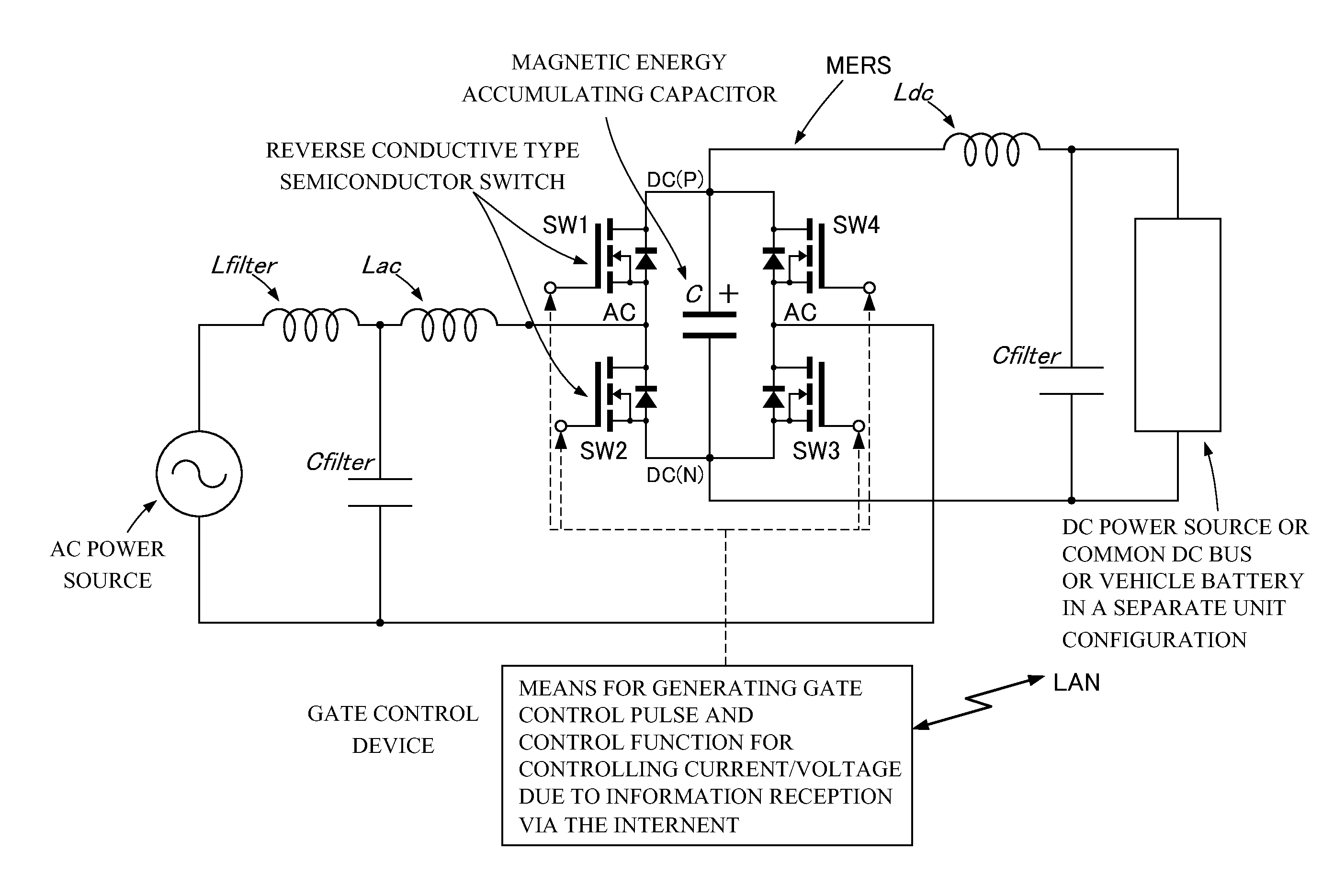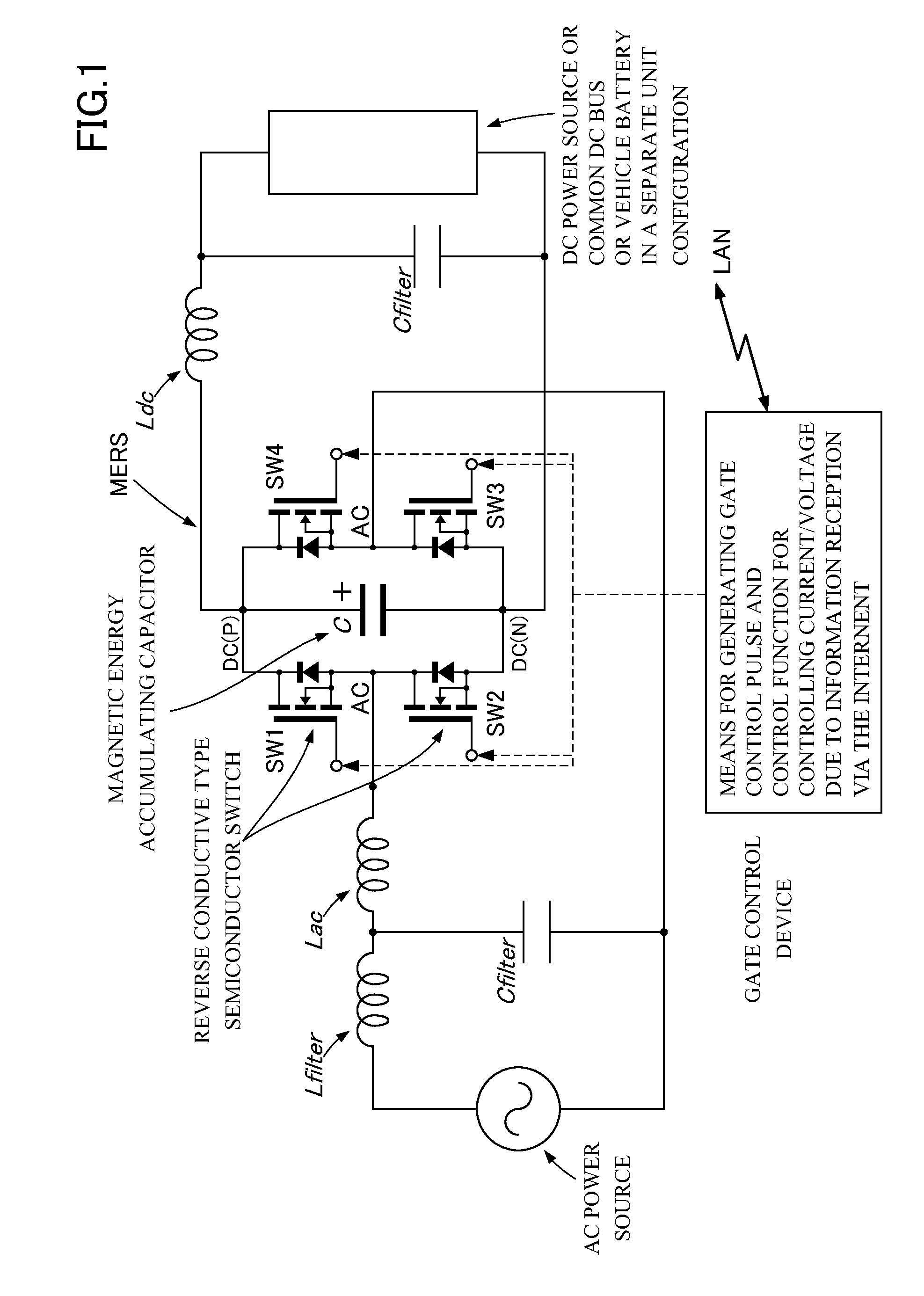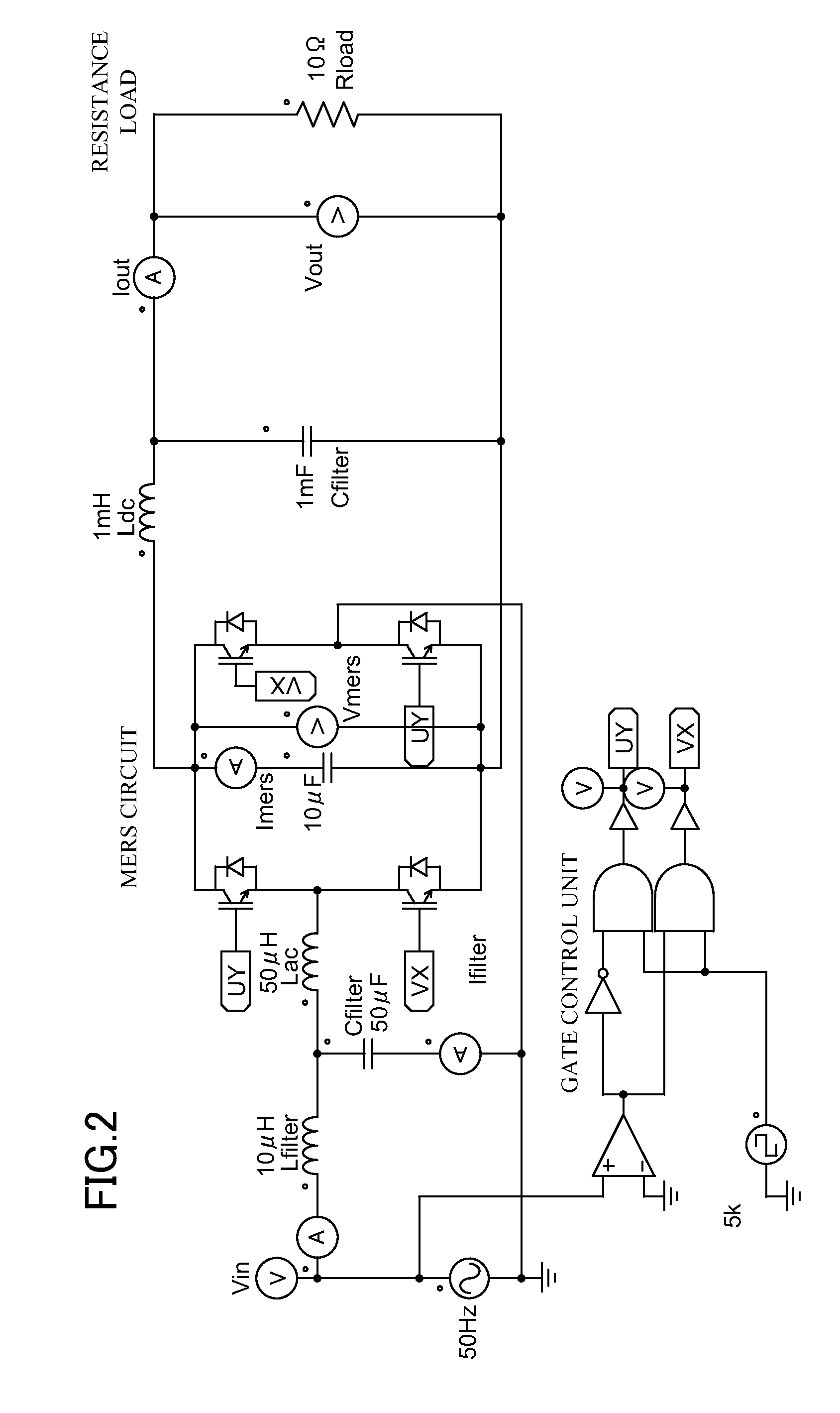Power converting apparatus
a power converter and power technology, applied in the direction of process and machine control, battery/fuel cell control arrangement, instruments, etc., can solve the problems of increasing frequency, large switching loss, and controlling charging power regardless, so as to avoid system damage, increase the capacity, and save power equipment.
- Summary
- Abstract
- Description
- Claims
- Application Information
AI Technical Summary
Benefits of technology
Problems solved by technology
Method used
Image
Examples
Embodiment Construction
[0094]An explanation will be given of an embodiment of the present invention with reference to the accompanying drawings. The same structural elements, members, and processes will be denoted by the same reference numerals in the drawings, and duplicated explanation will be omitted. The embodiment of the present invention is not for limiting the scope of the present invention, but for exemplifying the present invention, and it is not necessary that all characteristics and the combination thereof explained in the embodiment are always requisite to embody the present invention.
[0095]FIG. 1 is a circuit block diagram showing a schematic configuration of an electric-vehicle charging device mainly comprising a power converter using Magnetic Energy Recovery Switch (MERS) according to the embodiment of the present invention. The power converter of the present invention mainly comprises an MERS (Magnetic Energy Recovery Switch) disclosed in foregoing patent literature 5.
[0096]The Magnetic En...
PUM
 Login to View More
Login to View More Abstract
Description
Claims
Application Information
 Login to View More
Login to View More - R&D
- Intellectual Property
- Life Sciences
- Materials
- Tech Scout
- Unparalleled Data Quality
- Higher Quality Content
- 60% Fewer Hallucinations
Browse by: Latest US Patents, China's latest patents, Technical Efficacy Thesaurus, Application Domain, Technology Topic, Popular Technical Reports.
© 2025 PatSnap. All rights reserved.Legal|Privacy policy|Modern Slavery Act Transparency Statement|Sitemap|About US| Contact US: help@patsnap.com



